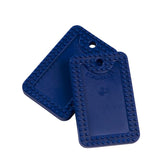Trending Now
Popular Products
Sensory Body Sock
- from £18.99 (£22.79 inc VAT)
- from £18.99 (£22.79 inc VAT)
- (-0%)
- Unit price
- / per
Jellystone Designs Princess & the Pea Pendant - Bright
- £10.83 (£13.00 inc VAT)
- £10.83 (£13.00 inc VAT)
- (-0%)
- Unit price
- / per
Chewbuddy® Tag Tuff - Twin Pack - Including Clip
- £7.99 (£9.59 inc VAT)
- £7.99 (£9.59 inc VAT)
- (-0%)
- Unit price
- / per
-
Black
-
Blue
Need Help?
Email Us
- Black Friday 2025
- Christmas
- Swim
- Clothing
- Bedtime
- Sensory & Activities
- Sensory & Activities
- All Sensory
- Activity Items
- Best Selling
- Guides & Advice
![]()
- Learning
- Daily Living
- Daily Living
- All In The Home
- Best Selling
- In The Home Guides & Support
![]()
- Toileting
- Out & About
- Teens+
- Condition
- Brands
- Help
- Help
- Help
Dyspraxia (Developmental Coordination Disorder) in Children: Practical Advice
Dyspraxia — often called Developmental Coordination Disorder (DCD) — affects how a child plans, learns and carries out movements. It can make everyday tasks like dressing, handwriting, PE and organising belongings slower or more tiring. With clear routines, small adaptations and the right tools, children can gain confidence and independence.
Safety note: If you notice sudden weakness, loss of skills, severe pain, frequent falls, episodes of fainting, or one-sided symptoms, seek medical advice urgently. Diagnosis and tailored support should be discussed with your GP/paediatrician and an Occupational Therapist (OT) or Physiotherapist.
Who this can help
- Children who seem “clumsy”, tire quickly, or find multi-step tasks hard to start or finish
- Those who struggle with handwriting, cutlery, scissors, buttons, zips or shoelaces
- Children finding PE, playground games or bike/scooter skills challenging
- Families and schools wanting practical, respectful strategies that reduce stress
What is dyspraxia/DCD?
- Plain English: The brain finds it harder to plan and coordinate movements. Learning new physical skills takes more practice and the child may tire more quickly.
- Medical: A neurodevelopmental disorder characterised by impaired motor coordination and praxis (motor planning), affecting activities of daily living and school participation, not explained by general intellectual disability or neurological conditions.
Common signs (examples)
- Gross motor: running, stairs, hopping, ball skills, balance and core strength can be difficult.
- Fine motor: pencil control, scissor use, cutlery, buttons/zips and in-hand manipulation may be slow or tiring.
- Organisation & sequencing: forgets kit, loses place in multi-step tasks, struggles with time and transitions.
- Co-occurring differences: some children also have sensory processing differences or low muscle tone; support should be individualised.
Quick wins
- Make steps visible: use simple visual sequences for dressing, morning routine and packing a bag.
- Backwards chaining: you start the task, the child finishes the last step; then add one more step back.
- Short & often: 5–10 minute practices beat long sessions; stop while it’s going well.
- Right-size the tools: choose easier fastenings and writing supports to reduce effort and frustration.
- Environment first: feet supported, table at elbow height, good lighting, low visual clutter.
Practical ideas at home
- Dressing: lay clothes in order; add zip pulls; practise one fastening at a time; try elastic laces.
- Mealtimes: use non-slip mats; start with foods that stay on the fork/spoon.
- Handwriting: tilt the paper slightly; try a writing slope; keep practice short and purposeful.
- Movement: scooter/balance practice, stepping games, short obstacle paths; focus on fun, not speed.
Practical ideas at school
- Seating & posture: feet flat/supported; desk at elbow height; consider a wobble cushion if it helps focus.
- Writing & recording: reduce copying from the board; use lined/boxed paper; allow keyboard/voice options for longer tasks.
- Organisation: consistent desk layout; colour-code books; use visual planners (TomTag).
- PE & playground: pre-teach skills in small groups; give a clear start/stop signal and predictable roles.
Products that can help
Only the most relevant tools for handwriting and seating/posture are listed here.
-
Writing & classroom tools
- Clear Writing Slope — promotes wrist position and visual tracking.
- Groovz Arm Guard — helps stabilise the forearm and guide movement.
- Weighted Handwriting Glove — adds gentle proprioceptive input to support control.
- Visual timers — show “how long” for tasks and breaks.
- TomTag visual planners — clear steps for routines, homework and packing.
-
Seating & posture
- Soft & Flexible Wobble Seat — gentle movement to aid sitting tolerance.
- Chair bands (Bouncyband) — help achieve stable, supported sitting.
Tips for success
- Teach one method, model slowly, then fade help; praise effort and small wins.
- Use backwards chaining for tricky sequences (zips, shoelaces, cutlery).
- Prioritise legibility and safety before speed; add speed later.
- Generalise: practise the same skill in a few places/times so it sticks.
Troubleshooting
- Very tired after school: shrink homework; use movement “reset” and a short, clear routine.
- Messy, smudged writing: try a writing slope and reduce copying; add short motor breaks.
- Coat/shoes battles: switch one fastening at a time (zip pull → elastic laces); practise when calm, not at the door.
- PE avoidance: pre-teach one element (throw → catch); use small teams and predictable roles.
Funding & budgets
- Potential funding options for families
- Digital catalogues to compare options by category
Need advice?
Email enquiries@fledglings.org.uk with age, top three challenges (e.g., dressing, handwriting, PE) and any tools you’ve tried. We’ll suggest options that fit your budget. We accept Purchase Orders. UK delivery from £4.99.
Support our work
Donate to Fledglings to help us keep advice free and prices fair.
Related
Last reviewed: 13 September 2025
- Choosing a selection results in a full page refresh.








